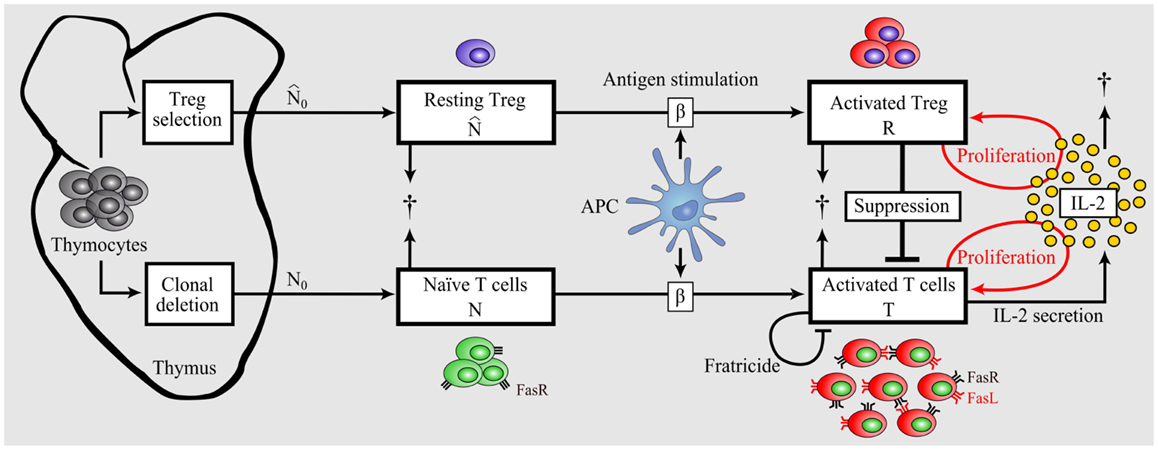20 3.2 Role of the Immune System in Multiple Sclerosis
Our immune system serves as a powerful defense mechanism that protects us from a multitude of pathogens. To maximize recognition of all peptides, our immune systems generates T-cell clones with random specificities to both foreign and self-antigens. Fortunately, individuals are often tolerant to self-peptides due to the processing of clones during Thymic Selection. Thymic Selection is a process whereby first, the Thymus positively selects for T-cell clones that have properly rearranged their T-cell receptor (TCR). It then negatively selects for autoreactive T-cells that have a very strong response to self-antigen. However, during this process not all autoreactive T-cells are destroyed, as they can be found in the plasma of healthy individuals (Khailaie et al., 2013). Luckily, our immune system has regulatory T-cells (Tregs), which are the primary cells involved in tolerance mechanisms and keep autoreactive T-cells in check. Tregs do this by secreting a variety of cytokines such as TGFβ, IL-13, and IL-10 that suppress both CD8+ T-cells and CD4+ T-cells (Saresella et al., 2013).

T-cells in the Central Nervous System
While is it unknown how these defective immune cells get into the central nervous system, it is thought that inflammation could weaken the blood-brain barrier and allow for immune cells to enter. Once inside the central nervous system (CNS), autoreactive CD4+ T-cells begin attacking the myelin sheath and affecting the transmission of nerve impulses. Watch this video to get a better understanding of how autoreactive CD4+ T-cells cause demyelination.
This video exemplifies the various immune cells involved in the progression of MS and some treatment options available to patients. Unfortunately, these medications are limited in that they are unable to prevent disease progression and its debilitating consequences. So is that all there is? A complex disease with no cure? Or is there a model out there that we can use to understand MS better? For answers to these questions we can turn to EAE mice, an animal model used in MS research which has provided researchers with a better understanding of MS and novel treatment options.
Before moving onto the next section try this memory game and see how much you learned about each of the different immune cells.
Molecules that induce an immune response in the body and usually lead to the production of antibodies
CD8+ T-cells are cytotoxic T-cells which kill infected cells
CD4+ T-cells are “helper T-cells” which secrete appropriate cytokines to aid in the attack against pathogens
